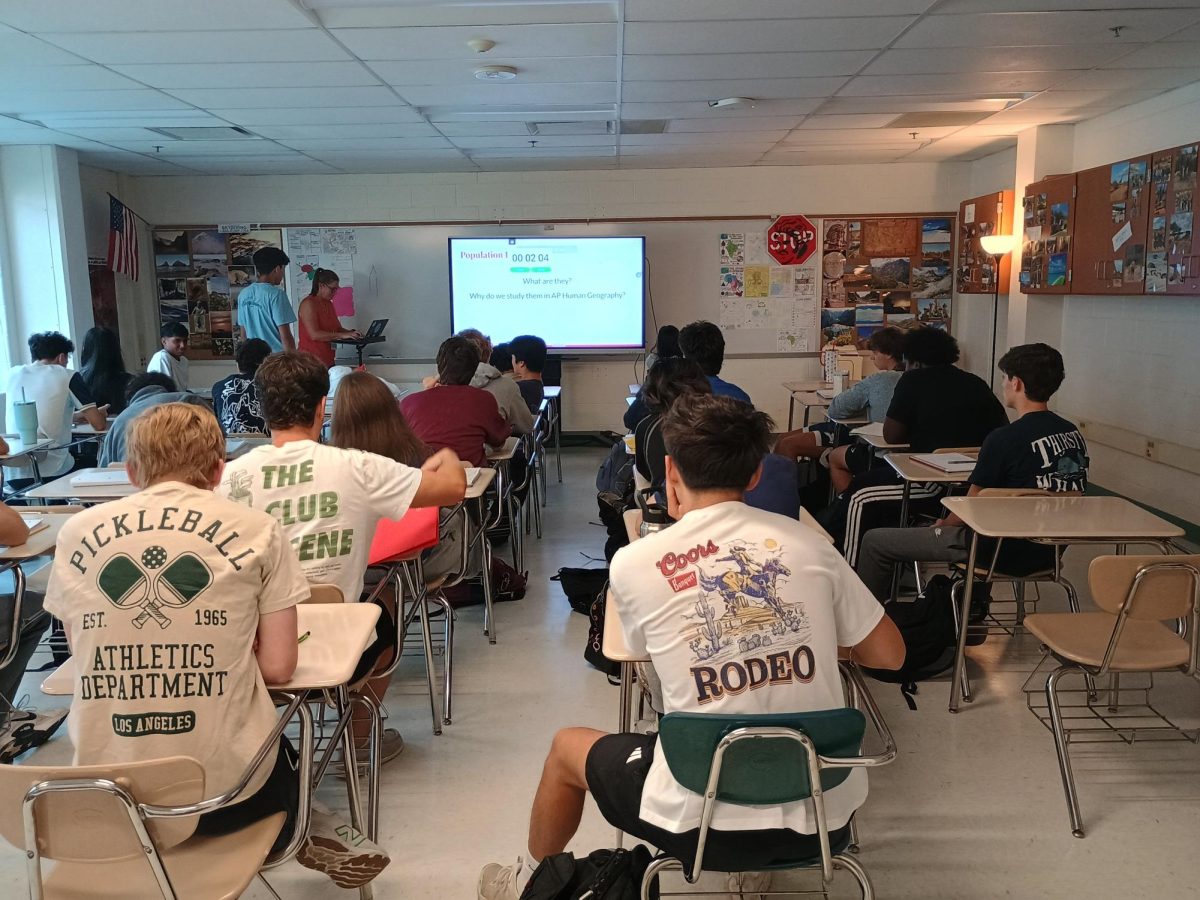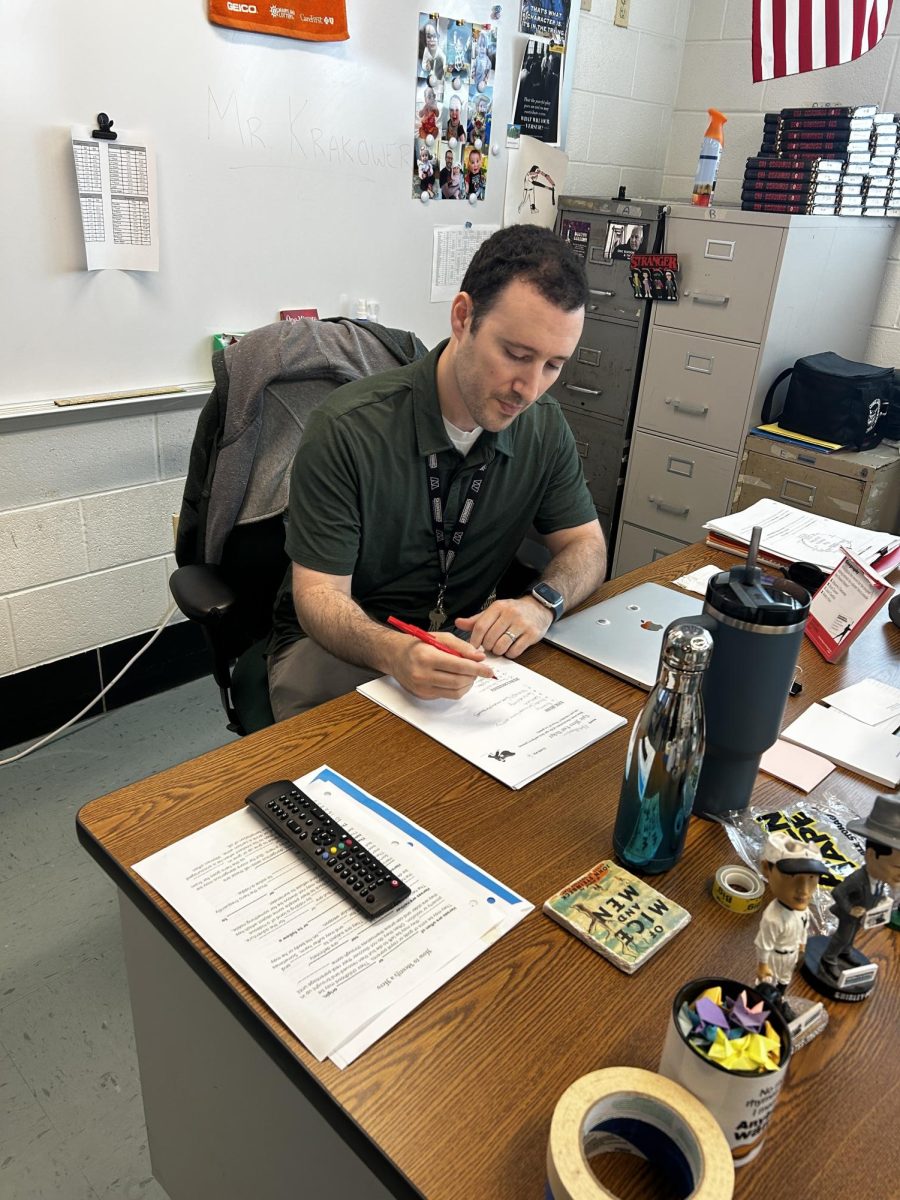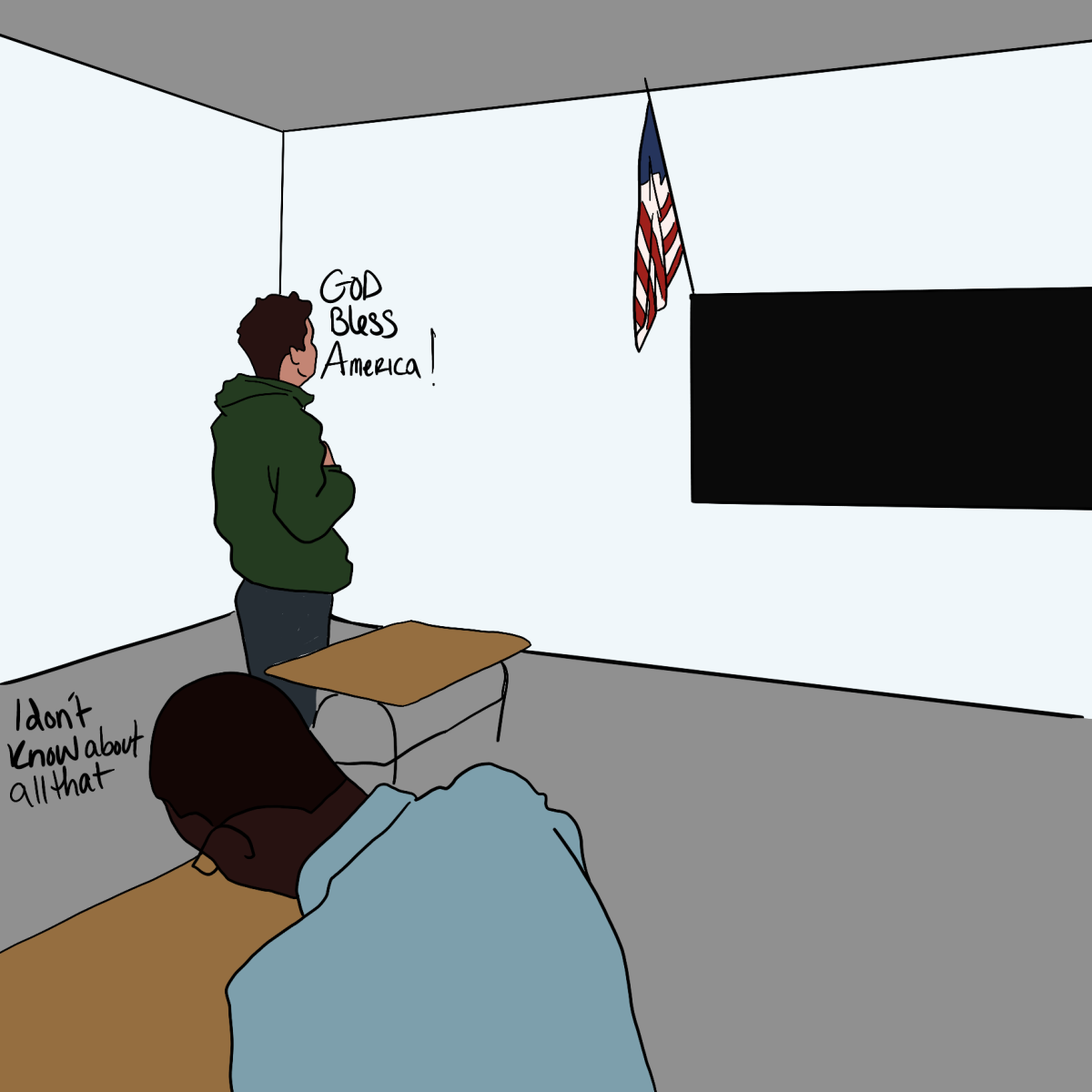Point by Cecilia Saltzman
The semester change in high schools around the county means that classes are changing, along with the teachers. Classes switch after the first semester, so students often don’t end up with their first-semester teachers. After months of growing a connection with teachers, they’re thrown into a new class and are forced to build a new relationship. If students could pick their teachers, this wouldn’t be an issue.
It’s difficult to be comfortable in school when you’re constantly adjusting. Just when I was feeling comfortable with all of my teachers, four out of seven were changed. It’s not only a personal or social relationship built, it’s also getting used to their teaching style and grading policies.
A large part of applying to college includes teacher recommendations. Students want their recommendations to come from teachers who know them well. If you’re only with a teacher for a couple of months, they won’t be able to know you to the fullest extent.
If a student feels really strongly either way about a teacher (whether they liked or disliked them), they could request a particular teacher who they believe will best support and benefit them. Just like in college, students can base their decisions about teachers on their previous experiences.
It’s especially important for students to have a beneficial teacher in AP classes, where an exam is taken at the end of the year in order to get college credit. If students don’t learn well with a particular teacher, they may have a harder time on the exam and decrease their chance of getting college credit.
Depending on your counselor and your relationship with them, you may be allowed to request a teacher. Students have been told it’s impossible to change teachers because of their preferences, but it is possible to change your teacher since it’s done for certain students.
Counselors are sometimes reluctant to switch teachers for students because of a history of students abusing schedule changes in order to be in class with their friends. However, simply requesting another teacher doesn’t mean a student will be in a specific class period since many teachers teach multiple periods of their subjects.
Although it would be ideal to grant every student’s requests, the counseling department would quickly become overwhelmed. Solutions such as request forms could be used to ease the overwhelming flood of desired schedule changes counselors have to deal with.
It may be argued that changing teachers prepares students for college; however, in college, students are able to choose classes and professors. A better way to prepare students for college would be to allow them to build relationships with their teachers so that they feel comfortable and excited to learn.
Counterpoint by Alexander Lewton
Same school year. Same classes. New teachers?
Because of the nature of WJ’s semester schedule, this is a reality that many students face halfway through the month of January. Beyond the new personality of these teachers, they each have intrinsically different teaching styles, often assigning different assignments and even grading tests in a different manner. While it may be difficult to adjust to these differences, they serve to benefit students’ learning rather than hinder it.
As a student, routine is one of the best ways to become successful in school. Establishing a set pattern of when to do different assignments helps to maintain a balanced workload even when the schoolwork can appear to pile up with no end in sight.
The mid semester change of teachers can bring a disruption to this balance, and the variations in how different teachers may teach the same class can be off putting to many students. For especially large classes, such as required English or science courses, there are numerous teachers who teach those courses, each making their own personalized alterations to the way they are taught.
However, what’s often overlooked is that teachers are reviewing the same content regardless of whether they choose to do so through showing a video or reading through lecture notes – it’s all about which one they prefer to utilize in the classroom.
Above all, the differences in each teacher’s instructing styles serve as a net benefit to their students. One example is from the class AP Human Geography, which is taught by two social studies teachers, Christopher Merril and Elizabeth Muehl. Each teacher utilizes different teaching strategies and activities, but rather than making things harder for students, they serve to enhance students’ learning experiences.
Merrill will take the first few minutes of class to detail a number of interesting and relevant maps, graphs and news articles that he’s found while Muehl will jump straight into class each day, but will often provide break time for students to decompress during the class period. These differences allow each teacher to attune the class and its content to better fit their teaching styles, rather than forcing them to follow a tight schedule each day in a manner that doesn’t prove conducive to learning. Both approaches are very successful, it’s just down to which one each teacher prefers.
Grading also falls along this same general blueprint. While each teacher may assign a slightly different number of points to each assignment, their perspectives on what deserves a particular grade and what doesn’t is first and foremost based on their own knowledge of how they went about teaching the content in the syllabus.
Ultimately, learning how to deal with different teachers’ methods of teaching is an important life skill for students to develop. Just as they may have to tailor one assignment to a teacher’s preferences, they also must deal with clients, bosses and coworkers that they won’t be able to switch away from after a meeting with a counselor.
So the next time you have a different assignment in one class than a friend with another teacher, don’t fret! You might just learn something.






















